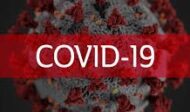EARLY diagnosis has become one of the most fundamental precepts of modern medicine. It goes something like this: The best way to keep people healthy is to find out if they have (pick one) heart disease, autism, glaucoma, diabetes, vascular problems, osteoporosis or, of course, cancer — early. And the way to find these conditions early is through screening.
It is a precept that resonates with the intuition of the general public: obviously it’s better to catch and deal with problems as soon as possible. A study published with much fanfare in The New England Journal of Medicine last week contained what researchers called the best evidence yet that colonoscopies reduce deaths from colon cancer.
Recently, however, there have been rumblings within the medical profession that suggest that the enthusiasm for early diagnosis may be waning. Most prominent are recommendations against prostate cancer screening for healthy men and for reducing the frequency of breast and cervical cancer screening. Some experts even cautioned against the recent colonoscopy results, pointing out that the study participants were probably much healthier than the general population, which would make them less likely to die of colon cancer. In addition there is a concern about too much detection and treatment of early diabetes, a growing appreciation that autism has been too broadly defined and skepticism toward new guidelines for universal cholesterol screening of children.
The basic strategy behind early diagnosis is to encourage the well to get examined — to determine if they are not, in fact, sick. But is looking hard for things to be wrong a good way to promote health? The truth is, the fastest way to get heart disease, autism, glaucoma, diabetes, vascular problems, osteoporosis or cancer … is to be screened for it. In other words, the problem is overdiagnosis and overtreatment.
Screening the apparently healthy potentially saves a few lives (although the National Cancer Institute couldn’t find any evidence for this in its recent large studies of prostate and ovarian cancer screening). But it definitely drags many others into the system needlessly — into needless appointments, needless tests, needless drugs and needless operations (not to mention all the accompanying needless insurance forms).
This process doesn’t promote health; it promotes disease. People suffer from more anxiety about their health, from drug side effects, from complications of surgery. A few die. And remember: these people felt fine when they entered the health care system.
It wasn’t always like this. In the past, doctors made diagnoses and initiated therapy only in patients who were experiencing problems. Of course, we still do that today. But increasingly we also operate under the early diagnosis precept: seeking diagnosis and initiating therapy in people who are not experiencing problems. That’s a huge change in approach, from one that focused on the sick to one that focuses on the well.
Think about it this way: in the past, you went to the doctor because you had a problem and you wanted to learn what to do about it. Now you go to the doctor because you want to stay well and you learn instead that you have a problem.
How did we get here? Or perhaps, more to the point: Who is to blame? One answer is the health care industry: By turning people into patients, screening makes a lot of money for pharmaceutical companies, hospitals and doctors. The chief medical officer of the American Cancer Society once pointed out that his hospital could make around $5,000 from each free prostate cancer screening, thanks to the ensuing biopsies, treatments and follow-up care.
A more glib response to the question of blame is: Richard Nixon. It was Nixon who said, “we need to work out a system that includes a greater emphasis on preventive care.” Preventive care was central to his administration’s promotion of health maintenance organizations and the war on cancer. But because the promotion of genuine health — largely dependent upon a healthy diet, exercise and not smoking — did not fit well in the biomedical culture, preventive care was transformed into a high-tech search for early disease.
Some doctors have long recognized that the approach is a distraction for the medical community. It’s easier to transform people into new patients than it is to treat the truly sick. It’s easier to develop new ways of testing than it is to develop better treatments. And it’s a lot easier to measure how many healthy people get tested than it is to determine how well doctors manage the chronically ill.
But the precept of early diagnosis was too intuitive, too appealing, too hard to challenge and too easy to support. The rumblings show that that’s beginning to change.
Let me be clear: early diagnosis is not always wrong. Doctors would rather see patients early in the course of their heart attack than wait until they develop low blood pressure and an irregular heartbeat. And we’d rather see women with small breast lumps than wait until they develop large breast masses. The question is how often and how far we should get ahead of symptoms.
For years now, people have been encouraged to look to medical care as the way to make them healthy. But that’s your job — you can’t contract that out. Doctors might be able to help, but so might an author of a good cookbook, a personal trainer, a cleric or a good friend. We would all be better off if the medical system got a little closer to its original mission of helping sick patients, and let the healthy be.
H. Gilbert Welch, a professor of medicine at the Dartmouth Institute for Health Policy and Clinical Practice, is an author of “Overdiagnosed: Making People Sick in the Pursuit of Health.”

 All Posts
All Posts









